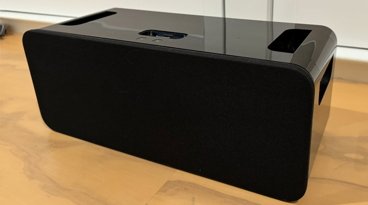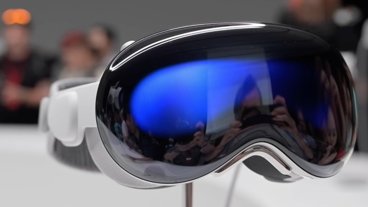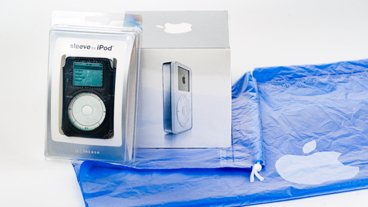Apple details next-gen Nike+ system with GPS, wear sensors
A new filing from Apple describes a future generation Nike+ system that would be capable of more accurately monitoring athletic performance in real-time, providing feedback on wear of athletic gear, and even conveying advertisements from establishments that an athlete passes during a workout.
More specifically, the system aims to more precisely track a runners performance over a period of time by factoring in various physical characteristics of the runner, such as age, weight, and gender, which could then be used to evaluate the runner's performance against a reference performance typical of a person having similar physical characteristics.
"In this way, a user could gauge his or her own athletic prowess and abilities against an accepted reference and be able to determine, for example, the performance percentile he or she falls in relation to his or her particular cohort of runners," Apple said. "In addition, it would be beneficial to be able to correlate a user's performance to particular garments (running time vs. a particular shoe or shoe design) as well as tracking shoe characteristics (such as wear) over time or distance used."
Wear and Shoe Performance
The Nike+ sensor would provide notification to a user that a particular garment has reached an expected useful lifetime based upon any number of factors, such as, an amount of time that the garment has been used, or the amount of wear detected by the sensor.
"For example, in many cases, a runner will not notice that a running shoe has been worn down to the point where crucial support (arch support, for example) has eroded thereby increasing the likelihood of injury," Apple explained. "In this way, by providing a notification that one or both of the running shoes should be replaced, the runner may be better able to avoid injuries related to outworn equipment."
To facilitate these functions, a next-generation Nike+ shoe could include force sensing units placed in shoe sole at three separate points: the heel, midsole, and toe. Each would periodically record impact force sensing data that could be used to characterize a user's running style in real time.
For example, by comparing the relative forces of impact and the temporal relationship between the occurrence of the forces of impact, a user's stride can be characterized as either a toe plant type stride or a heel plant type stride where a user's stride can be defined as an amount of time between consecutive toe, heel, or mid-sole impacts for a particular shoe, the filing explains. Taken over a number of strides, a user's running style profile could be developed that provides a characterization of the user's overall running style.
"Since, a runner's stride and stride type can vary over the course of a run (a sprint typically uses more of a toe plant style whereas a power walker would use more of a heel plant style), a user's running style profile can also vary over the course of the run (as well as well as over the course or months or years, or as the running shoes wear, or between different, but authorized, running shoes)," Apple said. "Therefore, in order to more accurately gauge a user's overall running style, a user's average running style can be calculated. In some cases, the user's average running style is accumulated from a number of previous runs using the same running shoe or can incorporate average running styles from different (but authorized) running shoes, if desired. In this way, a user has the ability to compare running styles and/or performance not only from one run to another, but from one running shoe to another, or merely deduce an overall running style regardless of the running shoe used."
GPS Support
One of the sensors employed by the running shoes could also include location-sensing devices (such as a GPS receiver) that provide velocity and location data to a processor unit that can be coupled to a database having information such as physical characteristic data such as weight, age, and gender, according to the filing. The database can then, in turn, provide an updated readout to a display unit of the user's ongoing athletic performance statistics. Such statistics can include elevation gain, speed, heading, elevation, calories burned, anticipated calories burned (based upon a pre-selected course), and others.
In addition, the sensor can be coupled to a distributed network of computers, such as the Internet, by way of a wireless device or in some cases as part of a peer-to-peer type arrangement of like wireless sensors or other wireless devices. In this way, the user would be able to download selected data (such as other athlete's performance data, selected courses, training programs, etc.) allowing the user to be part of a virtual community of athletes that can interact with each other in real time or virtually. In some embodiments, Apple said the sensor can optionally include one or more dead reckoning devices to provide direction information or change of location information. Such dead reckoning devices can include altimeters, accelerometers, cadence measurements sensors and the like.
In running shoes that include a GPS receiver, built-in memory would be able to store in addition to selected data such as measured user performance metrics, local elevation data in digital elevation model database in the form of DEM data. In addition, the memory could store local points of interest (such as restaurants, rest stops, parks, shops, etc.) that can be updated by the user or downloaded from external circuitry.
DEM data would serve to improve the accuracy of the GPS elevation and speed measurements as well as to improve the tolerance of sensors to satellite blockage. Meanwhile, the sensor's processor can be configured to calculate carrier-wave Doppler-shift based user velocity based upon data received from the GPS receiver and DEM database and calculate selected athletic performance feedback data using the calculated user velocity and other data such as the elevation profile and the user physical characteristics.
Apple noted that the use of Doppler based velocity measurements gives accuracies in the range of 0.1 mph in typical GPS receivers, which is the highest accuracy typically required for useful assessment of athletic activities.
"In this way, an extensive database of pertinent garment data can be stored and made available for the user and any other interested party such as a manufacturer interested in garment wear patterns, a user interested in correlating specific garment design to user performance statistics as would be the case with running shoes and run times," the company said. "Such data can include specific performance data (number of hours of use from time of purchase, for example) and any other data deemed appropriate. It should be noted that there could be a one-to-one correspondence between a particular garment and a particular tag identifier at a time. However, at any time, a particular tag identifier can be re-assigned to any other garment simply by removing the identification module associated with the particular tag identifier from one garment and placing it onto or in another garment."
Location Info and Advertisements
In addition to providing physiologic data, built-in sensors would be capable of providing indications of nearby locations of interest. For example, when sensor incorporates real time location technology (such as GPS), it can periodically check for nearby points of interest (included in a DEM database in the case of a GPS enabled system) provided, in some cases, by the user and in other cases by a workout template specific for the area in which the user plans to exercise.
"For example, in a GPS based system, prior to a workout, the user can download a list of preferred establishments (restrooms, restaurants, etc.) to the DEM database specific for the area in which the user plans to exercise (local parks, bike routes, jogging trails, etc)," Apple explained. "When the user approaches one of the points of interest (restaurant, for example) while exercising, a sensor can issue notification that the user is within a pre-determined distance of the nearby point of interest thereby providing the user the option to stop or continue the planned excursion unabated. Moreover, the nearby point of interest (i.e., restaurant) can also push information to the user by, for example, displaying advertisements in addition to the notification that the user is within the pre-determined distance."
The 20-page filing is credited to Apple employees Brett Alten and Robert Borchers.
 Sam Oliver
Sam Oliver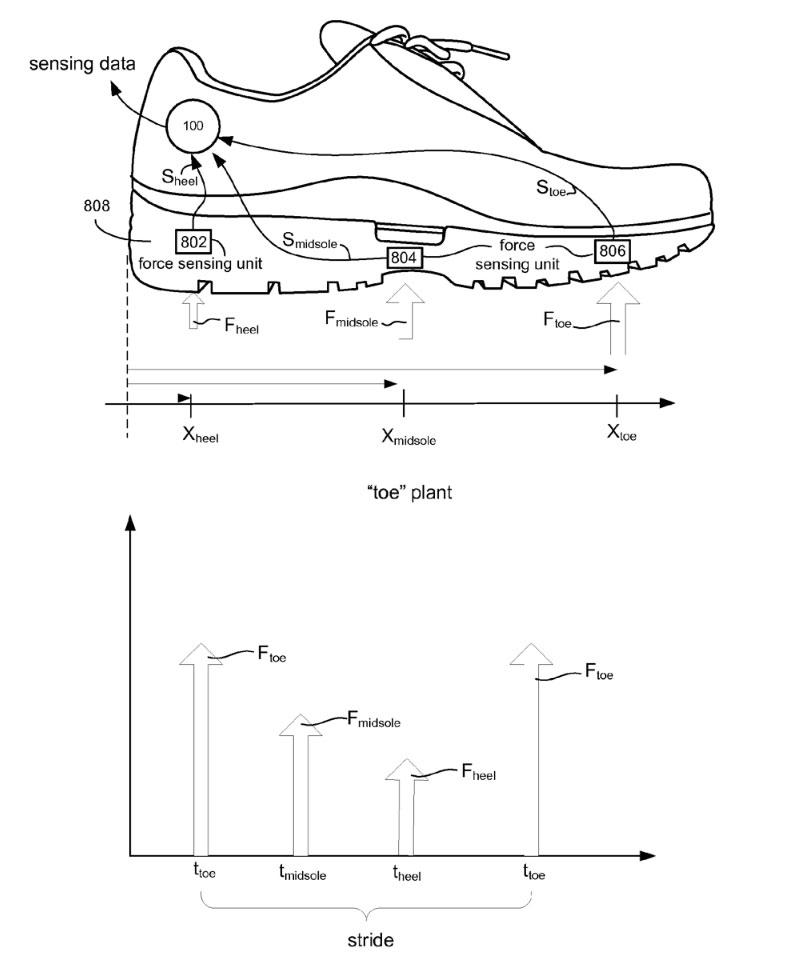
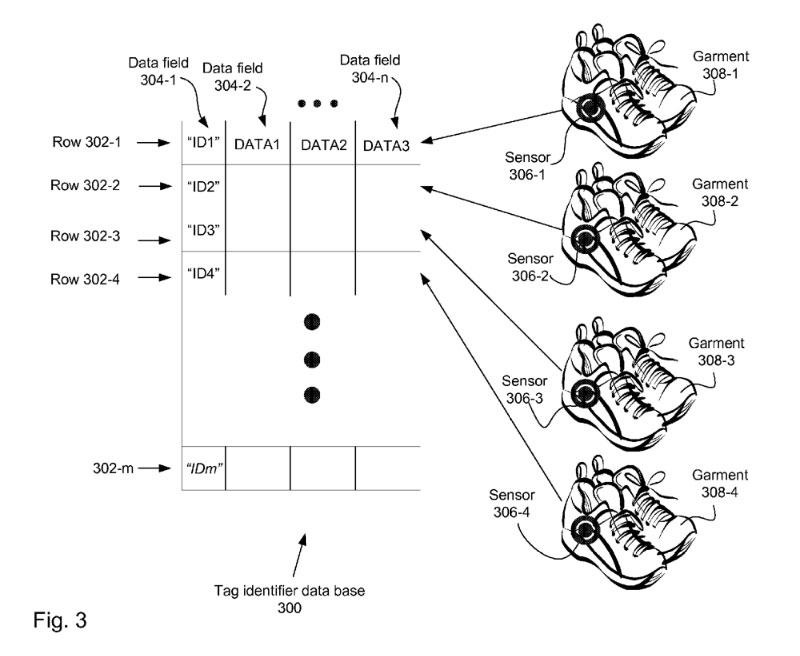
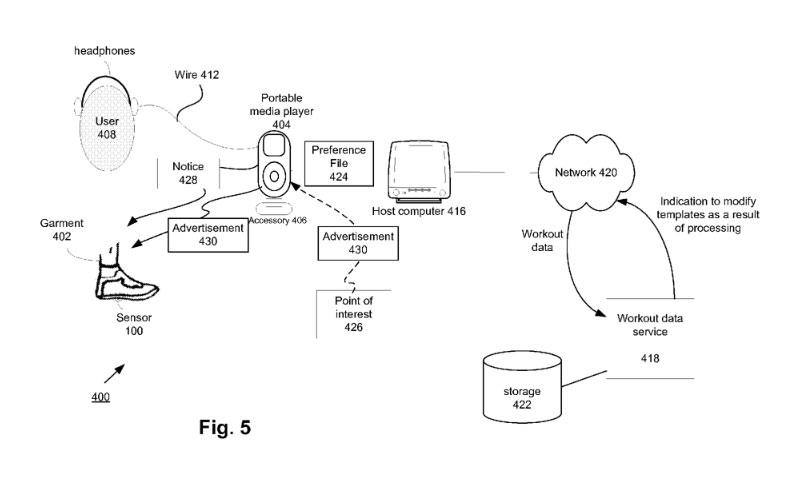











 Mike Wuerthele
Mike Wuerthele

 Malcolm Owen
Malcolm Owen
 Chip Loder
Chip Loder

 William Gallagher
William Gallagher
 Christine McKee
Christine McKee
 Michael Stroup
Michael Stroup